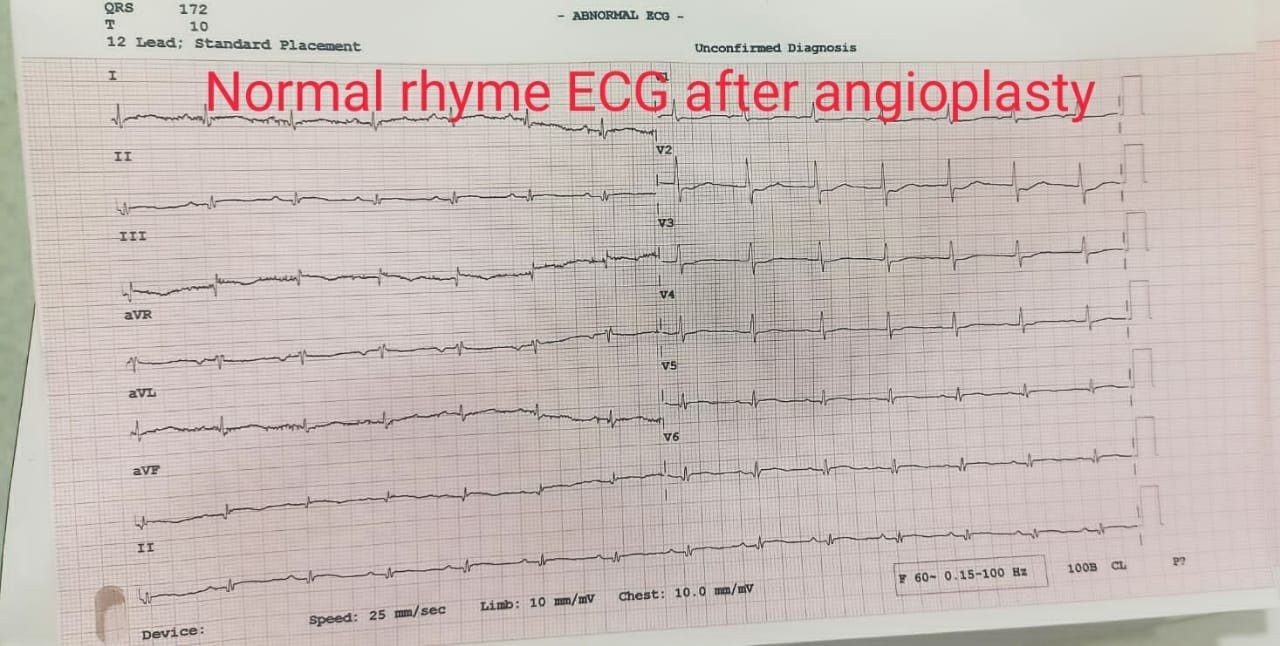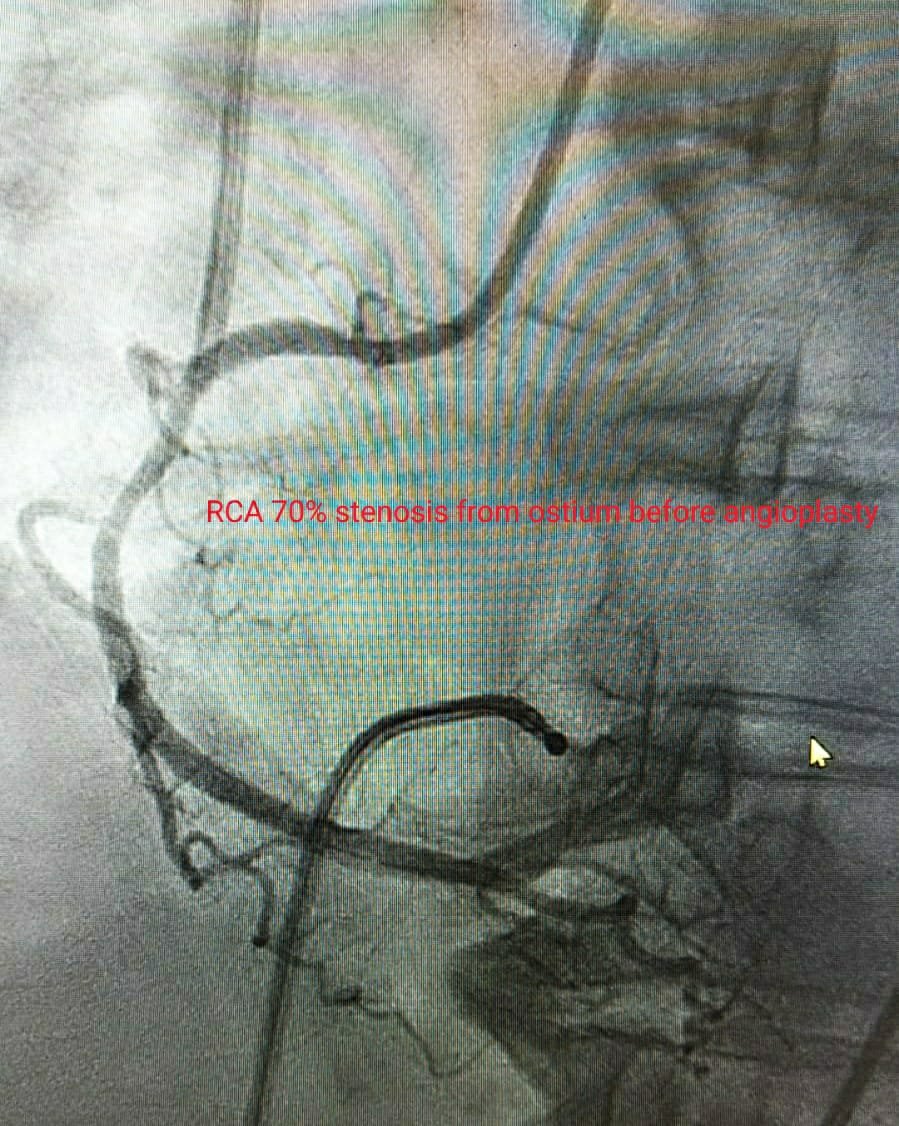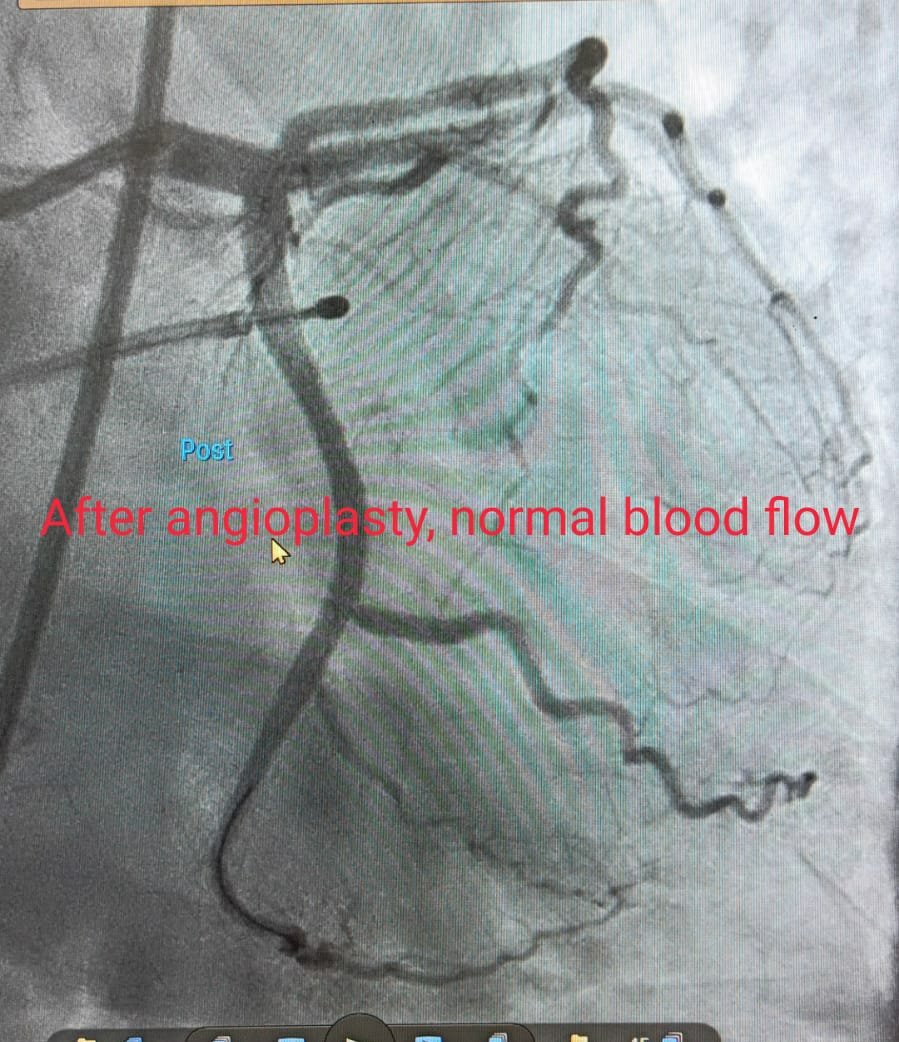In cardiovascular medicine, timely intervention can often be the difference between life and death. Recently, we encountered a case that exemplifies the critical role of emergent rescue percutaneous transluminal coronary angioplasty (PTCA) in managing acute myocardial infarction (MI) in a diabetic female patient.
Seventy years old and with a history of diabetes mellitus for the past five years, the patient presented to an outside hospital complaining of breathlessness over the previous three days. Initial investigations revealed an inferior wall myocardial infarction on electrocardiography (ECG), prompting immediate thrombolysis with tenecteplase.
A myocardial infarction, commonly known as a heart attack, requires prompt and specialized care, and a skilled myocardial infarction doctor is essential for effective treatment and recovery. With expertise in diagnosing and managing heart attacks, myocardial infarction doctors use advanced techniques and personalized care to restore heart health and prevent future complications. Choosing the right myocardial infarction doctor ensures you receive life-saving interventions and compassionate support during critical moments of heart care.
While initial stabilization was achieved, the patient experienced a sudden resurgence of chest pain and palpitations on the third-day post-thrombolysis. Further ECG monitoring revealed ST elevation with monomorphic ventricular tachycardia (VT), a condition associated with high mortality rates in the setting of MI.
Recognizing the situation’s urgenc, the patient was promptly transferred for coronary angiography and rescue PTCA. Angiography unveiled a 100% thrombotic occlusion of the left circumflex artery (LCX) and critical stenosis of the right coronary artery (RCA). Despite attempts to control VT with amiodarone and xylocarp, the patient continued to experience recurrent episodes, necessitating emergency rescue PTCA of both the LCX and RCA.
A top myocardial infarction hospital is equipped with advanced technology and a dedicated cardiac care team to provide immediate and effective treatment for heart attack patients.
Specialized myocardial infarction hospitals offer 24/7 emergency services, ensuring rapid diagnosis and life-saving interventions like angioplasty or thrombolysis during critical moments.
From state-of-the-art ICUs to expert cardiac rehabilitation programs, the best myocardial infarction hospital focus on comprehensive care for a safe and speedy recovery.
After a successful angioplasty, the patient’s VT resolved utterly, and her condition improved. She was discharged on the fifth-day post-procedure, with follow-up assessments indicating a favorable recovery.
This case highlights several crucial points:
- The importance of emergent rescue PTCA in managing acute MI, particularly in high-risk patients with diabetes mellitus.
- The potential for atypical MI presentations, including symptoms such as breathlessness, epigastric pain, and weakness, especially in diabetic, elderly, or female patients.
- The critical role of angioplasty in reducing the risk of reinfection post-thrombolysis and improving overall patient outcomes.
In conclusion, this case underscores the significance of prompt intervention and personalized care in managing acute myocardial infarction. We can effectively mitigate risks, optimize outcomes, and save lives by leveraging advanced techniques such as rescue PTCA.





